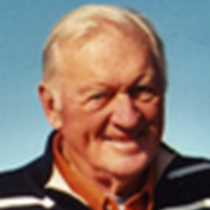Sitka, Alaska
After running the exciting Sergius Narrows north of Baranof Island the Sea Lion tied up in downtown Sitka. This settlement and former Alaska capital is a colorful reminder of Alaska’s Russian-American era, 1802-1867. A town tour began with a visit to one of the state’s unique activities, the Sitka Raptor Center. The next stop was the site of a violent 1804 battle between the local Tlingit nation and Russian-American employees. Having been expelled by the Tlingit in 1802, Governor Alexander Baranof led a re-invasion of Sitka – known to the Russians as New Archangel. Today the battlefield is the site of Totem Park which shelters new and old totem poles lining hiking paths throughout a scenic peninsula near a rushing stream.
Several guests opted to visit the nearby Sheldon Jackson Museum. This octagonal building – built to suggest a Northwest Coast Indian community house – was constructed in 1890 under the supervision of Dr. Jackson. Sheldon Jackson was a Presbyterian minister and former General Agent of Education for Alaska who first introduced reindeer to Alaska as a source of food and clothing for Eskimo (Inuit) people. Many guests then walked or rode to downtown Sitka, stopping along the way to visit one of only four Alaska buildings hand-hewn by Russian and Finnish artisans in 1842. Originally built as a bishop’s residence and center of Orthodox ecclesiastical authority in Alaska, it is today owned and managed by the U.S. National Park Service. The last significant stop on the guest tour was St. Michael’s Russian Orthodox Cathedral, the central architectural feature and symbol of downtown Sitka.
After casting off, the Sea Lion moved northward. Bears, bears, bears. Brown, black and honey-colored members of the Ursidae family caused guests to come on deck several times for a close look. Most of these furry creatures were youngsters, some of them grazing the beach, others apparently in a playful mood. After the bear show was over Naturalist David Stephens invited guests to the lounge and described the art and culture of Northwest Coast Indians. David also offered the guests touchy-feely samples of this rich culture, some made with his own hand.
More bear stories and an overview of 18th and 19th century aboriginal and Euro-American medical practices along the North American coast were the subjects of re-cap.
After running the exciting Sergius Narrows north of Baranof Island the Sea Lion tied up in downtown Sitka. This settlement and former Alaska capital is a colorful reminder of Alaska’s Russian-American era, 1802-1867. A town tour began with a visit to one of the state’s unique activities, the Sitka Raptor Center. The next stop was the site of a violent 1804 battle between the local Tlingit nation and Russian-American employees. Having been expelled by the Tlingit in 1802, Governor Alexander Baranof led a re-invasion of Sitka – known to the Russians as New Archangel. Today the battlefield is the site of Totem Park which shelters new and old totem poles lining hiking paths throughout a scenic peninsula near a rushing stream.
Several guests opted to visit the nearby Sheldon Jackson Museum. This octagonal building – built to suggest a Northwest Coast Indian community house – was constructed in 1890 under the supervision of Dr. Jackson. Sheldon Jackson was a Presbyterian minister and former General Agent of Education for Alaska who first introduced reindeer to Alaska as a source of food and clothing for Eskimo (Inuit) people. Many guests then walked or rode to downtown Sitka, stopping along the way to visit one of only four Alaska buildings hand-hewn by Russian and Finnish artisans in 1842. Originally built as a bishop’s residence and center of Orthodox ecclesiastical authority in Alaska, it is today owned and managed by the U.S. National Park Service. The last significant stop on the guest tour was St. Michael’s Russian Orthodox Cathedral, the central architectural feature and symbol of downtown Sitka.
After casting off, the Sea Lion moved northward. Bears, bears, bears. Brown, black and honey-colored members of the Ursidae family caused guests to come on deck several times for a close look. Most of these furry creatures were youngsters, some of them grazing the beach, others apparently in a playful mood. After the bear show was over Naturalist David Stephens invited guests to the lounge and described the art and culture of Northwest Coast Indians. David also offered the guests touchy-feely samples of this rich culture, some made with his own hand.
More bear stories and an overview of 18th and 19th century aboriginal and Euro-American medical practices along the North American coast were the subjects of re-cap.




